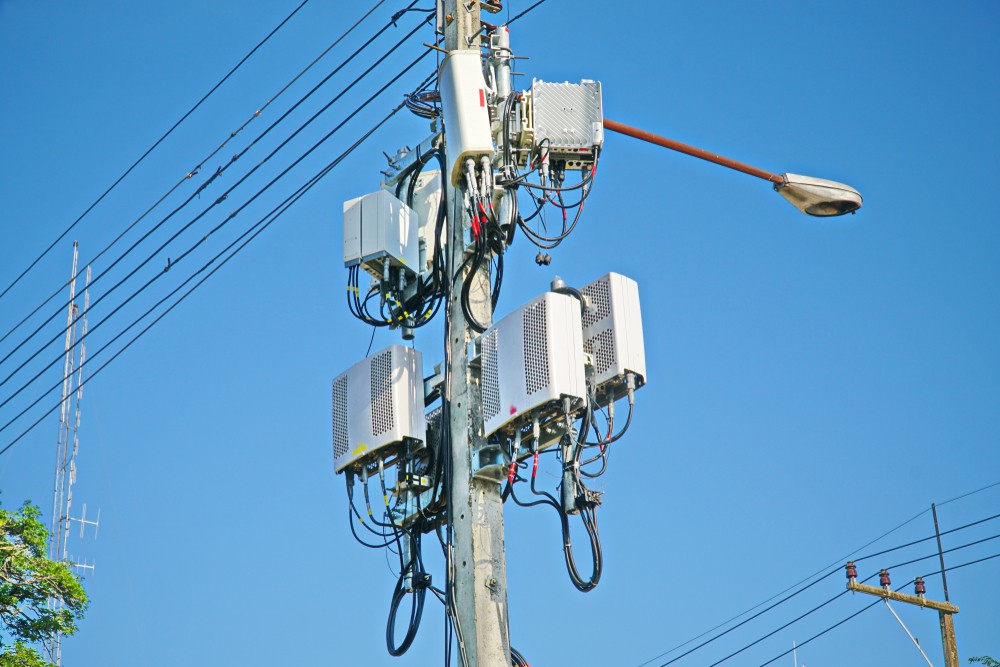To this point, more than 50 mobile operators will have launched 5G commercial services by the end of 2019 and the Koreans have been the 5G trailblazers over the past eighteen months. SKT, KT and LGU+ have rolled out more than 82,000 5G radio base stations across Korea and the availability of new 5G handsets allowed them to see 5G adoption grow to 1 million subscribers within less than three months.
In terms of latency, 4G networks currently run at around 50 milliseconds, while 5G will have a latency of only one millisecond. That’s around 50 times more than current 4G networks.
In a recent study, ‘Securing the Future of a Smart World’, that we conducted in partnership with the Business Performance Innovation (BPI) Network, which surveyed mobile service providers’ views on 5G, 67 per cent of respondents said that they will deploy their first commercial 5G network within 18 months and another 20 per cent within two years. Nearly all (94 per cent) expect growth in network traffic, connected devices and mission-critical IoT use cases to significantly increase security and reliability concerns for 5G networks. Around four in five (79 per cent) organisations said 5G is a consideration in current security investments.
The industry recognises that 5G will dramatically raise the stakes for ensuring the security and reliability of these networks.
5G uptake depends on fast security
So, the key to the uptake of the technology will be security. As with all new technologies, hackers will be looking to use it to carry out attacks. With the advent of 5G, there are going to be more attacks and bigger ones at that. These will most likely come from IoT devices or smartphones. The economics of DDoS mitigation and attacks are very much geared towards the attackers now, so there is a need for more efficient tools and advanced technologies to combat attacks at a more economic level.
A lot of extra security has been put into 5G, but as the bandwidth has increased and the latency has decreased, it is down to the industry to provide protection to these networks to prevent attacks such as DDoS from taking place. These are the main security concerns for the industry. In our survey 63 per cent thought that advanced DDoS protection is the most important security capability needed for 5G networks, while 98 per cent of respondents said core network security was either very important (72 per cent) or important (26 per cent) in 5G build-outs.
To better protect these ultra-fast networks, artificial intelligence and machine learning are necessary to make those quick decisions that make the difference to whether or not a cyber-attack is successful. Current solutions are static, reactive and require significant operator intervention, resulting in a slow response time.
Lower latency requires AI-Driven Security
In the light of 5G latencies that are measured in milliseconds, the only way to realistically deal with an attack is by applying artificial intelligence machine learning capabilities and using algorithms that can learn very quickly.
We recently launched Zero-day Automated Protection (ZAP) in our Thunder® TPS DDoS mitigation solution that automatically recognises the characteristics of DDoS attacks and applies mitigation filters without advanced configuration or an operator’s manual intervention. It solves many of today’s DDoS defenders’ challenges by re-balancing the economics of the DDoS attacker and the defenders’ efforts through intelligent automated defences.
Working in conjunction with A10 Networks’ actionable DDoS weapons intelligence and the five-level adaptive policy mitigation engines, ZAP effectively blocks attackers while protecting the users from indiscriminate collateral damage commonly found with traditional systems.
Without AI to combat ever more complex and speedier cyberattacks, it will be difficult, if not impossible, to safely deploy technologies such as autonomous cars and remote surgery. Real-time application use cases will not happen without a network that is properly secured in real-time.
Over the next five years, we will see tremendous growth in 5G adoption on a global basis. In fact, according to a recent forecast by the GSMA, more than 1.4 billion connections will be on 5G by 2025. The majority of commercial 5G networks will be deployed as non-standalone 5G and a smaller percentage will leverage the standalone 5G architecture and services in the coming years.
We will also see a massive build-out of millions of mobile-edge clouds, essential to achieving less than three milliseconds of latency, and the roll-out of autonomous-driven cars and other ultra-reliable low-latency use cases more broadly. We will see continuous enhancements of the 3GPP 5G standard and focus on delivering vehicle-to-everything (V2X) application-layer services, 5G satellite access, LAN support in 5G, improved network automation, network slicing solutions and new IoT services. In summary, 5G has a tremendous opportunity to disrupt every single vertical industry in the next 5 to 10 years.




